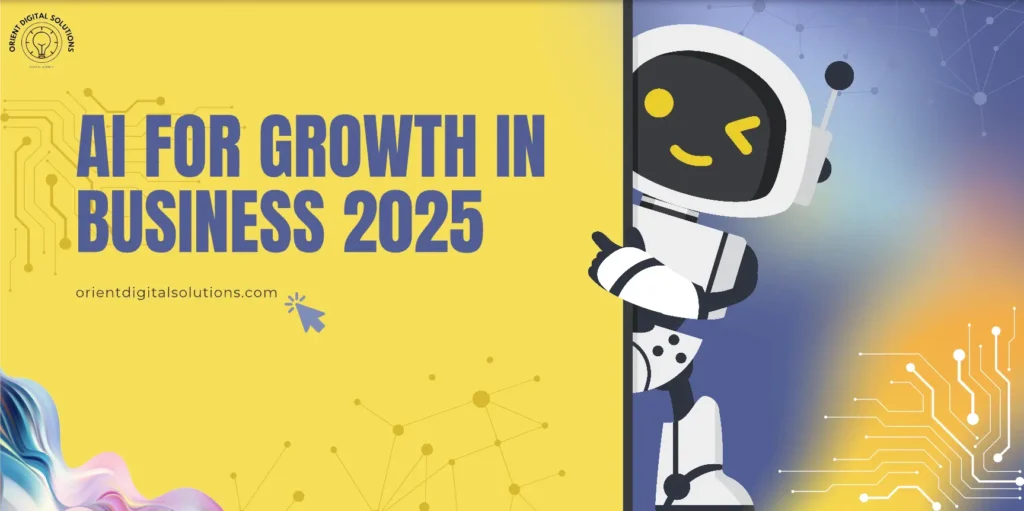Search Engine Optimization (SEO) continues to be a crucial aspect of digital marketing, enabling businesses to increase their visibility and drive organic traffic from search engines. As we step into 2024, the SEO landscape is evolving more rapidly than ever, influenced by advances in technology, changes in consumer behavior, and updates in search engine algorithms. This article explores the key trends and strategies for succeeding in SEO in 2024.
 Understanding SEO in 2024
Understanding SEO in 2024SEO is the process of optimizing your website to rank higher on search engine results pages (SERPs) for relevant keywords and phrases. The higher your website ranks, the more visible it is to potential customers, leading to increased traffic and conversions. In 2024, SEO is more than just about keywords and backlinks; it’s about providing a holistic and high-quality user experience.
Key Trends Shaping SEO in 2024
- AI and Machine Learning Integration
Artificial Intelligence (AI) and machine learning are playing increasingly significant roles in SEO. Search engines like Google use AI algorithms, such as RankBrain and BERT, to better understand user intent and provide more relevant search results. These technologies analyze search queries and user behavior to improve the accuracy and relevance of search results.
-
- RankBrain: Google’s AI-based algorithm that helps process and understand search queries. It uses machine learning to determine the best match for each query, even those that are ambiguous or unique.
- BERT (Bidirectional Encoder Representations from Transformers): Enhances the understanding of the context of words in a search query, making the search results more accurate and contextually relevant.
To succeed in 2024, businesses need to focus on creating content that aligns with user intent and is contextually relevant, which can be achieved through a deep understanding of how AI algorithms interpret queries.
- Voice Search Optimization
The rise of smart speakers and virtual assistants has led to a significant increase in voice searches. By 2024, it’s expected that over 50% of searches will be voice-based. Voice searches tend to be longer and more conversational compared to typed queries, requiring a different approach to keyword research and content creation.
-
- Conversational Keywords: Optimize for natural language and long-tail keywords that people are likely to use when speaking rather than typing.
- Featured Snippets: Aim to rank for featured snippets, as voice assistants often pull answers from these for voice search results.
- Local SEO: Many voice searches are local in nature, so ensure your local SEO is strong, with accurate business listings and location-specific content.
- Mobile-First Indexing
With the majority of web traffic coming from mobile devices, Google has adopted mobile-first indexing. This means that Google predominantly uses the mobile version of the content for indexing and ranking. Websites must be optimized for mobile to ensure they provide a seamless user experience across all devices.
-
- Responsive Design: Ensure your website is fully responsive, adapting smoothly to different screen sizes and orientations.
- Page Speed: Mobile users expect fast loading times. Use tools like Google PageSpeed Insights to identify and fix issues that could slow down your site.
- User Experience: Focus on easy navigation, readable content, and minimizing intrusive pop-ups on mobile devices.
- High-Quality, Engaging Content
Content remains king in the world of SEO. However, the focus in 2024 is on creating high-quality, engaging content that provides real value to users. Content should be informative, well-researched, and tailored to meet the needs and interests of your target audience.
-
- Content Depth: Create comprehensive and in-depth content that thoroughly covers the topic and answers potential questions your audience might have.
- Multimedia: Use a mix of text, images, videos, and infographics to make your content more engaging and visually appealing.
- E-A-T (Expertise, Authoritativeness, Trustworthiness): Ensure your content demonstrates expertise, authority, and trustworthiness, as these are crucial factors that Google considers for ranking.
- User Experience (UX) and Core Web Vitals
Google’s Core Web Vitals are a set of metrics that assess a website’s loading performance, interactivity, and visual stability. These are crucial for delivering a good user experience, and they play a significant role in SEO rankings.
-
- Largest Contentful Paint (LCP): Measures loading performance. Aim for your main content to load within 2.5 seconds.
- First Input Delay (FID): Measures interactivity. Ensure your pages are interactive within 100 milliseconds.
- Cumulative Layout Shift (CLS): Measures visual stability. Aim for a CLS score of less than 0.1 to prevent unexpected layout shifts.
Improving these metrics involves optimizing your site’s speed, enhancing server response times, and ensuring that elements load smoothly without shifting.
- Visual and Video Search
Visual and video content is increasingly becoming an integral part of SEO. With platforms like Google Lens allowing users to search using images and the prominence of video content on platforms like YouTube, optimizing for visual search is essential.
-
- Image Optimization: Use high-quality images with descriptive file names and alt text to improve their discoverability in image search.
- Video SEO: Optimize video content with relevant titles, descriptions, and tags. Include transcripts and captions to make videos accessible and searchable.
- Schema Markup: Implement schema markup for images and videos to provide search engines with detailed information about your visual content.
- Local SEO and Google My Business
Local SEO continues to be vital, especially for businesses with a physical presence. With the increasing use of mobile devices for local searches, having a strong local SEO strategy is crucial for driving traffic and attracting local customers.
-
- Google My Business (GMB): Optimize your GMB listing with accurate business information, hours, and photos. Encourage customers to leave reviews and engage with them.
- Local Keywords: Target location-specific keywords and create content relevant to your local audience.
- NAP Consistency: Ensure your Name, Address, and Phone number (NAP) are consistent across all online listings and directories.
- Data-Driven SEO and Analytics
Leveraging data to inform SEO strategies is more important than ever. Advanced analytics tools can provide insights into user behavior, traffic sources, and content performance, helping you make data-driven decisions.
-
- Google Analytics: Use Google Analytics to track user behavior, identify top-performing pages, and understand traffic sources.
- Search Console: Monitor your site’s performance on Google Search, identify indexing issues, and analyze search queries that drive traffic.
- User Behavior Tools: Use tools like heatmaps and session recordings to gain insights into how users interact with your site and identify areas for improvement.
Strategies for SEO Success in 2024
- Conduct Thorough Keyword Research
Keyword research is the foundation of any successful SEO strategy. In 2024, focus on understanding the search intent behind keywords and phrases your target audience uses.
-
- Long-Tail Keywords: Target long-tail keywords that are more specific and less competitive. These often have a higher conversion rate.
- User Intent: Analyze the search intent behind keywords. Are users looking for information, seeking to make a purchase, or trying to navigate to a specific page?
- Competitive Analysis: Use tools like SEMrush or Ahrefs to identify keywords your competitors are ranking for and find gaps in their strategy.
- Optimize for Featured Snippets
Featured snippets are highly visible in search results and can significantly increase your site’s click-through rate (CTR). Aim to rank for these by providing clear and concise answers to common questions.
-
- Answer Common Questions: Create content that directly answers frequently asked questions in your industry.
- Use Structured Data: Implement structured data to help search engines understand your content and increase your chances of appearing in featured snippets.
- Format Content: Use bullet points, numbered lists, and tables to make your content easy to read and more likely to be featured.
- Create High-Quality, Relevant Content
Content is at the core of SEO. Focus on creating valuable content that meets the needs of your audience and aligns with their search intent.
-
- Content Calendar: Develop a content calendar to plan and organize your content creation efforts. Ensure a consistent flow of new and updated content.
- User-Centric Content: Write for your audience first and search engines second. Provide valuable information that answers their questions and solves their problems.
- Content Diversification: Mix different types of content, such as blogs, videos, infographics, and podcasts, to cater to various audience preferences.
- Enhance User Experience (UX)
A positive user experience is essential for both SEO and overall website success. Focus on creating a seamless, intuitive, and enjoyable experience for your visitors.
-
- Mobile Optimization: Ensure your website is fully optimized for mobile devices, with responsive design and fast loading times.
- Easy Navigation: Create a clear and logical navigation structure that helps users find what they’re looking for quickly and easily.
- Engaging Design: Use appealing visuals, intuitive layouts, and interactive elements to keep users engaged and reduce bounce rates.
- Leverage Technical SEO
Technical SEO ensures that search engines can effectively crawl, index, and understand your website. It also impacts user experience and site performance.
-
- Site Speed: Optimize your site’s loading speed by compressing images, minimizing code, and leveraging browser caching.
- Secure Website: Use HTTPS to secure your website and protect user data, which is a ranking factor in Google’s algorithm
- Build Quality Backlinks
Backlinks are a crucial factor in SEO, as they signal to search engines that your content is valuable and authoritative. Focus on acquiring high-quality, relevant backlinks.
-
- Content Promotion: Share your content on social media, email newsletters, and other platforms to increase its visibility and attract backlinks.
- Guest Blogging: Write guest posts for reputable websites in your industry to gain exposure and earn valuable backlinks.
- Outreach: Build relationships with influencers, bloggers, and industry leaders who can link to your content.
- Utilize Local SEO Strategies
If you operate a local business, optimizing for local search is essential for attracting nearby customers and driving foot traffic.
-
- Local Listings: Ensure your business is listed on local directories and review sites with accurate and consistent information.
- Localized Content: Create content that is relevant to your local audience, such as blog posts about local events or community news.
- Customer Reviews: Encourage satisfied customers to leave positive reviews on your Google My Business listing and other review platforms.
- Stay Updated with SEO Best Practices
SEO is a constantly evolving field, with search engine algorithms and best practices changing regularly. Stay informed and adapt your strategies to keep up with the latest trends and updates.
-
- Follow SEO News: Keep up with the latest news and updates from sources like the Google Search Central Blog, Moz, and Search Engine Journal.
- Attend Webinars and Conferences: Participate in SEO webinars, workshops, and conferences to learn from industry experts and stay ahead of the curve.
- Continuous Learning: Invest in ongoing education and training for yourself and your team to ensure you’re always up-to-date with the latest SEO techniques.
Conclusion
Succeeding in SEO in 2024 requires a comprehensive approach that combines technical optimization, high-quality content, and a deep understanding of user behavior and search engine algorithms. By staying ahead of the trends and focusing on providing value to your audience, you can achieve higher rankings, increased visibility, and long-term success in the ever-evolving digital landscape.
SEO is a marathon, not a sprint. It requires continuous effort, adaptation, and a commitment to excellence. As you implement these strategies and keep pace with the latest developments, you’ll be well-positioned to thrive in the competitive world of SEO in 2024 and beyond.



